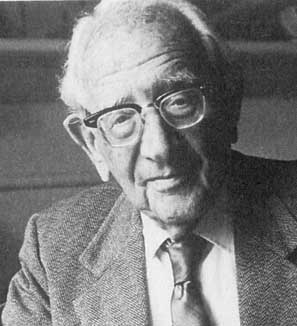<Back to Index>
- Mathematician George Pólya, 1887
- Painter Franz von Lenbach, 1836
- Emperor of China Yongzhen, 1678
PAGE SPONSOR


George Pólya (December 13, 1887 – September 7, 1985, in Hungarian Pólya György) was a Hungarian mathematician. He is most noted for his work in heuristics and mathematics education, publishing several books on the subject, the most famous of which is the celebrated How to Solve It: A New Aspect of Mathematical Method.
He was born as Pólya György in Budapest, Hungary to originally Jewish parents Mrs. Anna Deutsch and Mr. Jakab Pólya who converted to Roman Catholicism in 1886. He was a professor of mathematics from 1914 to 1940 at ETH Zürich in Switzerland and from 1940 to 1953 at Stanford University carrying on as Stanford Professor Emeritus the rest of his life and career. He worked on a great variety of mathematical topics, including series, number theory, mathematical analysis, geometry, algebra, combinatorics, and probability. In his later days, he spent considerable effort on trying to characterize the methods that people use to solve problems, and to describe how problem solving should be taught and learned. He wrote four books on the subject: How to Solve It, Mathematical Discovery: On Understanding, Learning, and Teaching Problem Solving; Mathematics and Plausible Reasoning Volume I: Induction and Analogy in Mathematics, and Mathematics and Plausible Reasoning Volume II: Patterns of Plausible Reasoning.
In How to Solve It, Pólya provides general heuristics for solving problems of all kinds, not only mathematical ones. The book includes advice for teaching students of mathematics and a mini-encyclopedia of heuristic terms. It was translated into several languages and has sold over a million copies. Russian physicist Zhores I. Alfyorov, (Nobel laureate in 2000) praised it, saying he was very pleased with Pólya's famous book. The book is still referred to in mathematical education. Douglas Lenat's Automated Mathematician and Eurisko artificial intelligence programs were inspired by Pólya's work.
He died in Palo Alto, California, USA.
In 1969 the Society for Industrial and Applied Mathematics established the George Pólya Prize, given alternately in two categories for "a notable application of combinatorial theory" and for "a notable contribution in another area of interest to George Pólya." In 1976 the Mathematical Association of America established the George Pólya Award "for articles of expository excellence" published in the College Mathematics Journal. In 1987 the London Mathematical Society established the Polya Prize for "outstanding creativity in, imaginative exposition of, or distinguished contribution to, mathematics within the United Kingdom."